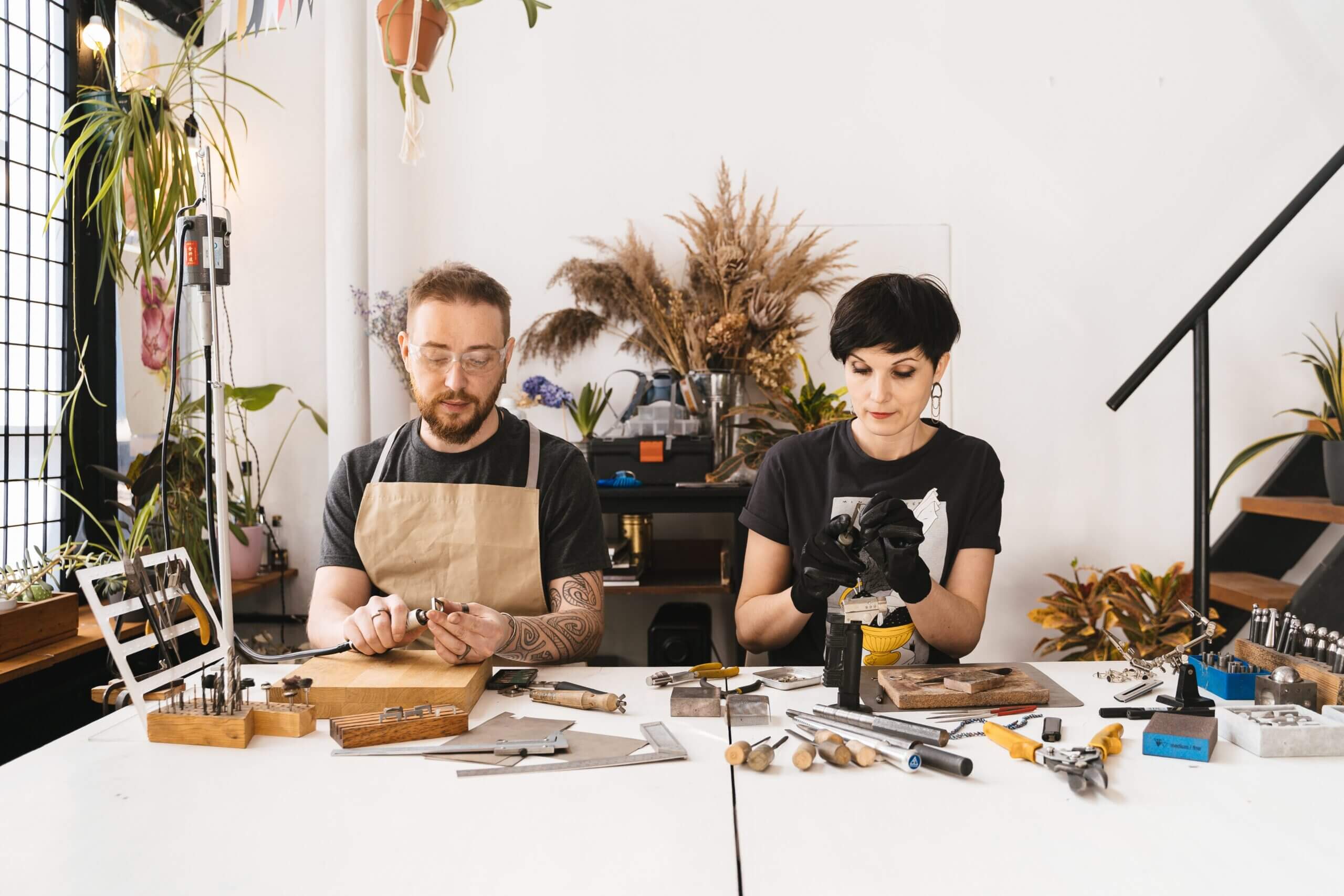Business strategies for arts and crafts
Arts and crafts have become big business. One example is Etsy, which has increased in revenue and usage every year since 2010. In 2020, Etsy sellers sold US $10.3 billion to the platform’s 89 million active buyers.
Many people want to monetize their creative hobbies, and some entrepreneurs have been successful doing so. According to the Canada Council for the Arts, there are 158,100 professional artists in the country.
Given the competition, it is important that would-be arts and crafts businesses run tightly. There are several key areas that better the chance of success for many businesses just starting out or facing challenges.
Pricing strategies
Appropriate pricing can mean life or death for a business. In some cases, a business can close—in debt, all the while selling well.
The market for handmade quilts provides insight into this phenomenon. Quiltdom lists the average market price for a handmade quilt to be US $400. This may seem expensive, but depending on costs, this price could actually put a business owner in debt.
Quiltdom lists the average cost for materials as US $183. Say the quilt takes 24 hours to design and create, and a business owner pays themself US $20 per hour. The cost of the blanket would already be US $663, even before factoring in any overhead costs. This means for every quilt sold at market value, a business owner in that situation could lose hundreds of dollars.
So, what is a better pricing strategy? MadeUrban gives a traditional pricing formula. This formula is simply to take the total cost of production, then multiply it by two for wholesale cost. Then, multiply it by two again for retail.
There are other formulas as well. The traditional pricing strategy is useful and ensures scalability. That said, MadeUrban feels it is imprecise and could be too expensive in some situations. Many online calculators help with suggested prices for handmade goods. Though, it is also important to calculate prices manually to ensure all expenses are accounted for.
Regardless of the formula chosen, it is crucial for business owners to pay themselves fairly. That includes all hours worked and overhead costs, deliberately factoring in a good profit margin. This will ensure a business is scalable.
Reconsidering a business direction
Say a business is selling hand-spun yarn. Perhaps the material is $5 per skein and the total labour costs are $60 per skein. Because the skein takes three hours to make, and the owner decides to pay themselves $20 per hour.
Next, maybe overhead costs are $5 per skein, and profit margins are 10 per cent. In this hypothetical scenario, a skein of yarn would cost $77 before shipping.
The issue with this scenario is that the skein would be significantly above market value for yarn. The only areas that could be reduced are the business owner’s wages or the margins. Those reductions are possible, but owners should ask themselves if this would be a wise decision. In fact, the business is not scalable when too many cuts are made.
Unfortunately, some businesses don’t make sense, given the global competition. It may be unwise to sell $77 skeins of yarn when others are selling them for $40.
In situations like this, it’s important to be creative about solutions but also realistic. Some businesses just don’t work in the landscape.
Revenue source adaptability
As an artist or craftsperson, it may be tempting to only sell physical items in a marketplace. This may be needlessly limiting and worse for a business.
Instead, a combination of many revenue sources may be a good choice for some businesses. For example, a ceramics artist can sell their work for a fair price. But they may not sell enough to make it a full-time income.
To become a full-time artist, it may be worthwhile for the business owner to teach classes and workshops. They could also sell raw materials and supplies to their students with a profit margin and repair pottery wheels locally. Between these other three revenue sources, the ceramics artist would still get to do what they love. But they may earn more of an income.
Treating a business like a business
For many artists and craftspeople, business is a means to an end. Many want to do what they love while making a living.
An important overall consideration is the fact that an arts or crafts business is still fundamentally a business. To have the best chance of success, this deserves to be a guiding principle.

Eliot Gilbert
Eliot is a journalist for Business Hub. His background is in English and creative writing at York University. When not writing, he studies medical laboratory science in Kingston, and enjoys hand spinning yarn, cooking, and gardening.

